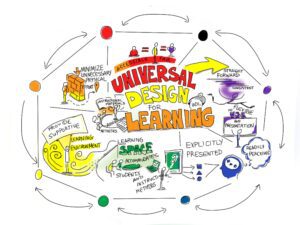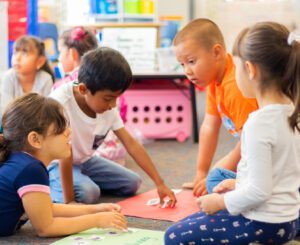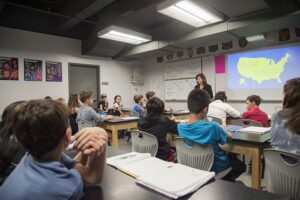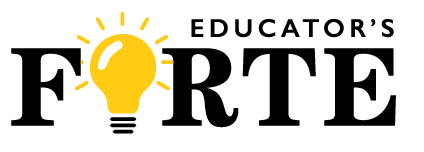As a former teacher with years of experience in the field of education, I have seen the power of inclusive practices in transforming the lives of students with disabilities. Inclusive education goes beyond legal requirements; it is a commitment to ensuring that every student, regardless of their abilities, feels included, valued, and supported in the general education classroom. In this blog post, I will share four effective strategies that have helped me be successful in making students with disabilities feel included in the general education inclusion classroom.
Individualized Education Plans (IEPs) and Differentiation
Over the years, I have come to recognize the immense value of Individualized Education Plans (IEPs) in supporting students with disabilities. These plans provide a roadmap for addressing their unique needs, setting appropriate goals, and determining necessary accommodations and modifications. By creating IEPs in collaboration with students, their families, and support professionals, we can create personalized strategies that empower students to actively participate in the curriculum. When attending an IEP meeting, as a general education teacher, it is important to have some data about the student. This data doesn’t have to be just assessment data; it can be anecdotal data based on your observation of the student during class.
Some things to consider when observing students:
- What are the student’s academic strengths and areas of need?
- How does the student engage with classroom materials and assignments?
- How does the student interact with peers and adults in social settings?
- How does the student participate in group work or collaborative activities?
- What accommodations or modifications does the student currently use? Do they use them effectively? Are they still beneficial?
- Are there specific challenges that impact the student’s ability to fully engage in the classroom?
Additionally, implementing differentiation techniques, such as offering varied assignments and assessments, ensures that students with disabilities can access the content and demonstrate their knowledge using their strengths.

Universal Design for Learning (UDL)
Adopting the principles of Universal Design for Learning (UDL) has changed my approach to teaching and promoting inclusivity. UDL emphasizes providing multiple means of representation, action, and expression to cater to diverse learners. Through UDL, I have learned to offer a range of materials and resources, including audio, visual, and tactile formats, to accommodate different learning preferences. Integrating assistive technology tools into daily instruction has allowed students with disabilities to access information and express their understanding in ways that were once challenging for them. UDL not only addresses individual needs but also benefits the entire classroom by promoting engagement and active learning.
In my experience, there have been times when I used a specific curriculum provided by a publishing company. While it wasn’t a scripted curriculum, the resources, activities, assessments, etc. were all provided. I found it beneficial to review the materials and make necessary adaptations to meet the needs of my students. This involved modifying assignments, incorporating assistive technology, and providing supplementary resources. For example, I often provided audiobooks to my students or created graphic organizers to help them organize their thoughts before a Socratic Seminar. I did this by working closely with my special education teacher to be sure I was meeting the needs of students with disabilities.

Peer Collaboration and Social Interaction
Creating opportunities for peer collaboration and social interaction is essential for fostering inclusion in the classroom. I have witnessed the power of collaboration firsthand, as it enhances both academic and social development for students with disabilities. Implementing structured activities that encourage group work, discussions, and problem-solving not only facilitates inclusive learning but also cultivates a sense of belonging. By fostering an environment of acceptance and understanding, where students celebrate diversity and learn from one another, we can create a supportive community that embraces and includes everyone.
Collaboration Ideas:
- Socratic Seminars: a student-led discussion that encourages critical thinking and deep exploration of a text or topic through open-ended questions and respectful dialogue.
- Think-Pair-Shares: a collaborative learning strategy where students individually reflect on a question or topic, then discuss their thoughts with a partner, and finally share their ideas with the whole class.
- Jot-Pair-Shares: a learning activity where students quickly jot down their thoughts or ideas, then share and discuss them with a partner.
- Group Work: a cooperative learning approach where students collaborate in small groups to complete a task or project.

Building a Supportive Classroom Climate
One of the most crucial aspects of fostering inclusion is building a supportive classroom climate. I have found that establishing a safe and nurturing environment is vital for students with disabilities to succeed. I prioritize creating a culture of respect, kindness, and empathy within my classroom community. I encourage open communication, active listening, and the sharing of diverse perspectives. Celebrating each student’s unique strengths and abilities, while addressing any challenges with empathy and support, helps foster a sense of belonging. Regular check-ins with students, along with timely intervention and assistance, ensure that they feel supported on their educational journey.
I learned that inclusive education is not a one-size-fits-all approach; it requires dedication, collaboration, and continuous growth. By implementing strategies such as individualized education plans, differentiation, Universal Design for Learning, peer collaboration, and building a supportive classroom climate, we can create an inclusive environment where students with disabilities thrive academically, socially, and emotionally. As educators, it is our privilege and responsibility to champion inclusion and provide every student with the opportunity to succeed. Together, let us foster a community where all students, regardless of their abilities, feel included, valued, and supported on their path to lifelong learning.

